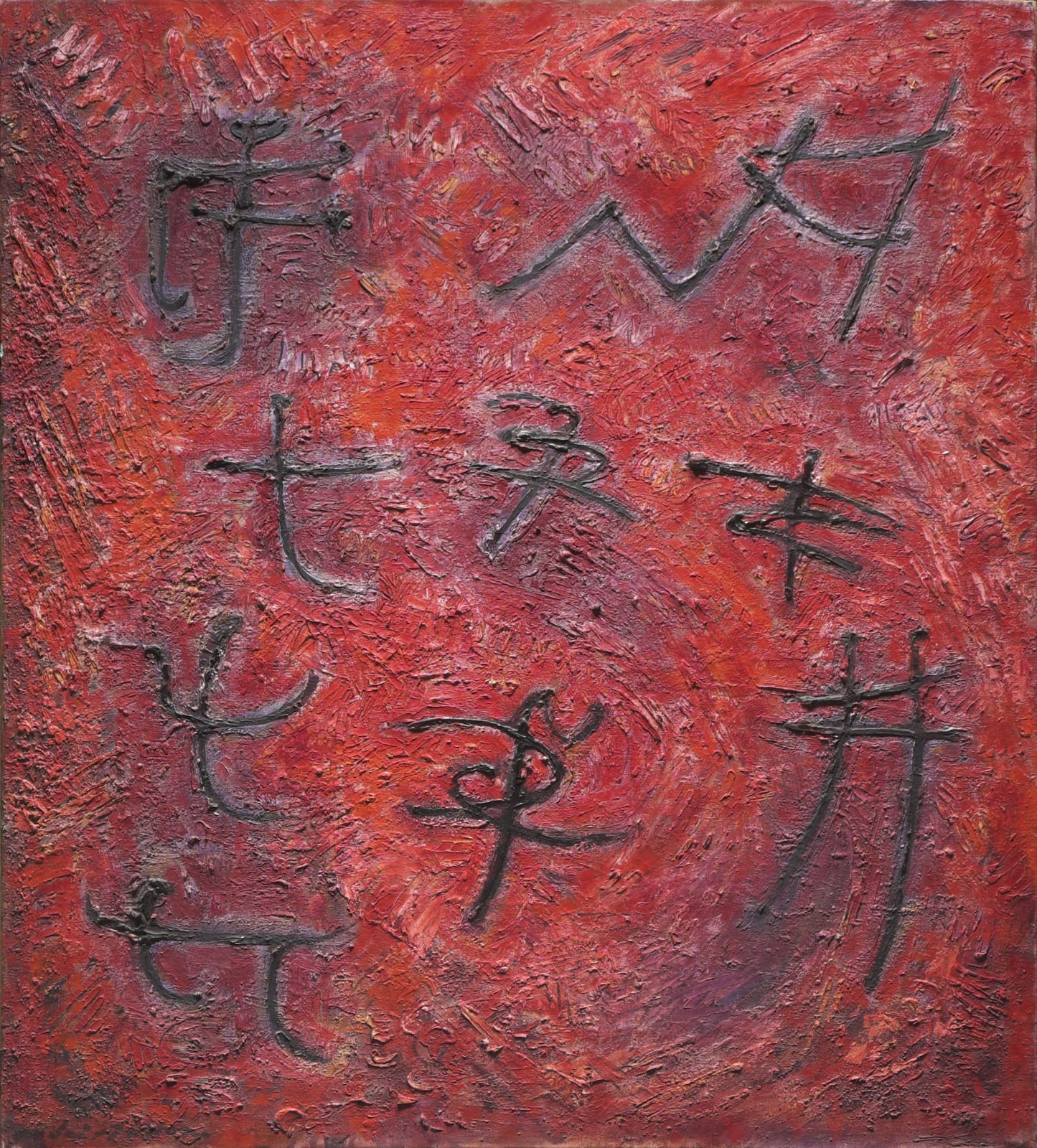André Masson French, 1896-1987
After the complex intertwining forms of his Sables of the 1940s, "Fête" represents the artist's full plunge into the question of the pictographic sign. Around 1955 Masson began a new series of characters and signs: calligraphic forms that seemed to dance on monochrome backgrounds. The simplicity of the writing of La Fête, combined with the pictographic, sometimes even anthropomorphic character of its signs, recalls the divinatory inscriptions, thousands of years old, of Chinese Oracle Bone Script . For Masson, an artist always interested in the flow of energy that animates the world, the work would take on the same magical and incantatory role. In a text entitled "A painting of the essential", Masson expresses himself on the influence that painting and Far Eastern thought have on him, in particular the freedom of the gesture in an infinite space and the vital, elementary forces of the Zen philosophy of the Liezi. If the pictogram is one of the great preoccupations of the avant-garde movements, in the utopian quest for a universal language, what Masson does in his works is a more subjective and free translation of the underlying forces of nature. This philosophy is accentuated by the artist's touch, thick with impasto in a vortex of pictural matter. His forms thus seem to dance on the incendiary red background.
After the complex intertwining forms of his Sables of the 1940s, "Fête" represents the artist's full plunge into the question of the pictographic sign. Around 1955 Masson began a new series of characters and signs: calligraphic forms that seemed to dance on monochrome backgrounds. The simplicity of the writing of La Fête, combined with the pictographic, sometimes even anthropomorphic character of its signs, recalls the divinatory inscriptions, thousands of years old, of Chinese Oracle Bone Script . For Masson, an artist always interested in the flow of energy that animates the world, the work would take on the same magical and incantatory role. In a text entitled "A painting of the essential", Masson expresses himself on the influence that painting and Far Eastern thought have on him, in particular the freedom of the gesture in an infinite space and the vital, elementary forces of the Zen philosophy of the Liezi. If the pictogram is one of the great preoccupations of the avant-garde movements, in the utopian quest for a universal language, what Masson does in his works is a more subjective and free translation of the underlying forces of nature. This philosophy is accentuated by the artist's touch, thick with impasto in a vortex of pictural matter. His forms thus seem to dance on the incendiary red background.
Provenance
Artist's studio
Galerie Louise Leiris, Paris, 1956
Galerie Beyeler, Bâle
Galerie Cleto Polcina, Rome
Private collection, Paris (since 1996)
Exhibitions
XXIX Exposition biennale internationale des Beaux-Arts, Venise, 1958.
5th International Art Exhibition, Japan, 1959.
Madrid, André Masson, Armero Ediciones, Nacional Centro de Arte Reina Sofia, 29 janvier - 19 avril 2004. Catalogue n° 250.
Céret, André Masson, une mythologie de l’être et de la nature, éd. Silvana, Musée d’art moderne de Céret, 22 juin - 27 octobre 2019. Catalogue n° 197.
Literature
André Masson, 29 janvier - 19 avril 2004, Musée National de la Reina Sofia, éd Armero, Madrid, 2004, pg. 250.
André Masson, une mythologie de l’être et de la nature, éd. Silvana, Musée d’art moderne de Céret, 22 juin - 27 octobre 2019, pg. 197.
